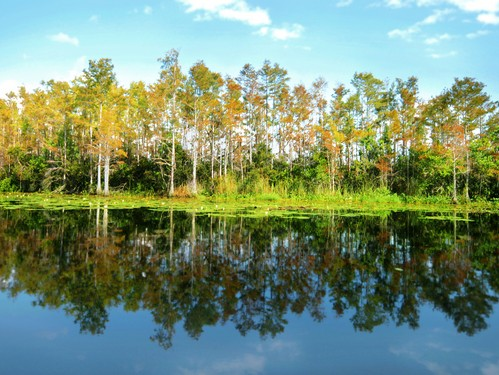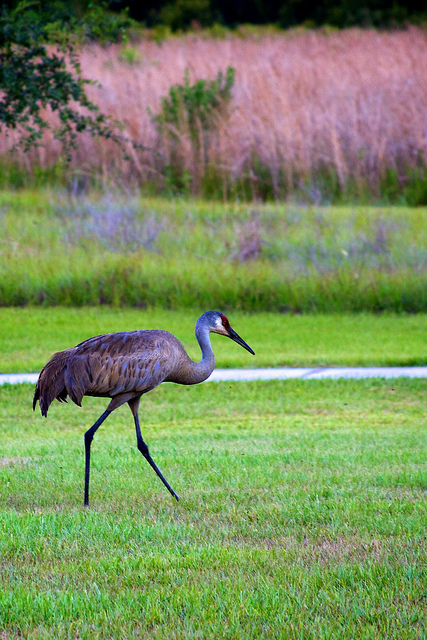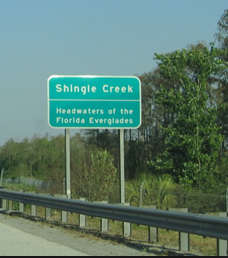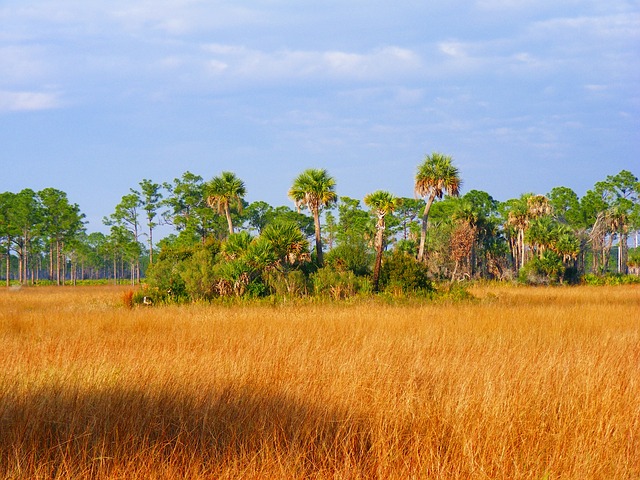Nature’s Wonderland: The Disney Wilderness Preserve

The land Walt Disney World is built upon is often described simply as swamp. But like any simple explanation, the word “swamp” doesn’t come close to describing the complex truth. Walt Disney World Resort’s hotels and theme parks are carved out a unique blend of cypress swamp, longleaf pine savannas, and sandy palmetto scrublands–diverse ecosystems that probably deserve their own dioramas in Epcot’s “Living With the Land.” It’s a complex ecology of water and land that begins right on Disney property, and is intertwined with life on the Florida peninsula all the way south to the Florida Keys. Visiting Walt Disney World can give you a taste of Florida’s natural wonders, but for a really good look, visit The Disney Wilderness Preserve.
You’ll get a taste of what Reedy Creek and Bay Lake looked like back when Walt Disney was surveying the land. Just head off the beaten path, driving south of the tourist areas in Kissimmee. Beyond the miniature golf and the go-kart tracks you’ll find The Disney Wilderness Preserve, managed by The Nature Conservancy. It’s a native Floridian landscape of cypress domes, floodplain forests, and palmetto uplands. After a hike through this unique and delicate country, you’ll come away with not just a greater idea of the land through Walt’s eyes, but the deep ties between humanity and the land.
Partners in Preservation

Photo: Keenan Adams, U.S. Fish & Wildlife Service Southeast
The Disney Wilderness Preserve began a new chapter in conserving Florida’s land and water. Most new development in Florida requires wetlands mitigation–if wetland habitat is destroyed for construction, new habitat must be created.
But instead of creating a few acres of isolated wetland in newly urbanized areas, The Walt Disney Company bought a massive piece of threatened habitat: an 8500-acre cattle ranch near Kissimmee, home to the unspoiled, undeveloped Lake Russell. They transferred the land to The Nature Conservancy, one of the largest conservation groups in the world.
The Nature Conservancy has restored the land following its decades of use as a typical Florida cattle ranch, when it was criss-crossed with drainage canals and planted in bahia grass. Today its pine uplands and palmetto savannas are managed with prescribed burns–managed wildfires for fire-dependent habitats–and its habitats are the sites of studies with a variety of scientists.
The U.S. Fish and Wildlife Service is working with Red-cockaded woodpeckers on the preserve; a team from Disney’s Animal Kingdom is studying a massive rookery of the threatened wood stork; the National Ecological Observatory Network and the University of Central Florida are studying carbon storage and climate change.
The residents of the Disney Wilderness Preserve include Florida icons like alligators, but also armadillos, gopher tortoise, fox squirrels, and the southeastern big-eared bat. The birding is incredible–watch for red-cockaded woodpeckers, the threatened wood stork, families of sandhill cranes, and birds of prey like the crested caracara, the northern harrier, and the bald eagle. The preserve is a stop on the Great Florida Birding Trail.
The Disney Wilderness Preserve and “The Northern Everglades”
Today, the Disney Wilderness Preserve stretches across 11,500 acres, thanks to a neighboring purchase from the Greater Orlando Aviation Authority (wetlands mitigation of their own, for airport expansions), and is a model of modern wetlands preservation. It’s also the northernmost reach and a point of pride in the new Everglades Headwaters National Wildlife Refuge and Conservation Area, a multi-governmental initiative which aims to protect 150,000 acres of what is now thought of as “The Northern Everglades,” from Orlando to Lake Okeechobee.
And Reedy Creek, which Disney fans know as the namesake of the Reedy Creek Improvement District (the government that manages Walt Disney World Resort property), is one of the Everglades’ northernmost headwaters.

The Everglades are often thought of as a south Florida swampland, far from Orlando’s theme parks. But Reedy Creek and Shingle Creek, which runs along John Young Parkway (near Sea World and the Orange County Convention Center) are two of the Everglades’ earliest headwaters. They eventually lead to the Kissimmee River, a meandering flow through thousands of acres of wetlands, and on to Lake Okeechobee and the Everglades itself.
The Everglades watershed and the Everglades itself provide water to 40 percent of Florida’s residents, and its slow-moving nature allows it to absorb many feet of rain from summer deluges and hurricanes alike. But twentieth-century enterprise, from cattle ranches, vegetable farming, and subdivisions, ditched the wetlands and sent water hurtling south, bypassing its normal meanders and wetlands.
As late as the 1960s, the Kissimmee River was dredged into a 30-foot deep canal, eliminating its 103 miles of oxbows, wetlands, and floodplains. Animal life vanished. The bald eagle population diminished by 70 percent; 90 percent of waterfowl disappeared, and oxygen depletion destroyed fish populations.
But the dependent nature of Florida’s ecosystems meant the damage went further than the lost river. A typical rainy season now meant high water levels in reservoirs. When excess water was flushed to the coast from Lake Okeechobee and other holding basins, it devastated saltwater life in the Gulf of Mexico, Florida Bay, and the Atlantic Ocean.

Restoring the natural flow of water–slow, meandering drifts through miles-wide floodplains–has been a vital piece of Florida conservation and the region’s future. The Kissimmee River is midway through a restoration, partly funded by the U.S. Army Corps of Engineers, who first diverted the water. Wildlife populations responded almost immediately to the return of the floodplains and wetlands. And bald eagles have become a common sight even in the Disney resort area.
Visiting the Disney Wilderness Preserve
Seemingly a thousand miles away from civilization (but really about 27 miles from the Magic Kingdom), an interpretive center welcomes guests to the wilderness. Outside the doors of this Green Building, a 2.5 mile hiking trail beckons, giving visitors a sampling of natural Florida. The paths wander through saw palmetto (a dense shrub that resembles a palm tree) thickets, to the cypress-ringed beauty of Lake Russell, to longleaf pine flatlands and oak hammocks.
Ranging out into the Florida scrub and wetlands, even on a well-marked gravel path, requires a certain amount of outfitting and timing. Mornings are best, especially in the summer months, to avoid the heat of the day and afternoon thunderstorms. There isn’t much shade in these habitats, so a hat is a good idea. Sunblock, drinking water, closed shoes, and a generous application of insect repellant are a must. If you’re visiting in the rainy season (June-October) or after a significant rainfall, expect some trails to have wet or flooded patches.
The Disney Wilderness Preserve is located at 2700 Scrub Jay Trail, Kissimmee, FL, 34759. Typical hours are Sunday-Friday, 9 AM- 5 PM. Trails may be closed for inclement weather or bad conditions. Call ahead at 507-935-0002 to check on operating hours, trail conditions, or guided trail opportunities. Some areas of the preserve are only available on guided tours, including southern areas where the endangered Florida Scrub Jay nests. Visit The Disney Wilderness Preserve at nature.org for more information.
Please welcome Natalie Reinert to the TouringPlans blog. You can find more of Natalie’s work at Families Go Travel, Glass Slipper Concierge, and That Dis Family.





Thank you for this extremely well-written and informative article. I really enjoyed reading it AND I now have a new location to visit.
Thanks for reading and commenting! Enjoy yourself out there!
Thank you so much for sharing this, and reminding us that there is more to Florida than just amusement parks. My family and I go to Orlando every other year and it’s so easy to be blinded to all of the things outside of the parks to do. I never knew this existed or that the everglades were that far north. Enjoyed learning more about the area and hope to visit soon.
Thanks for the comment, Claire! I really hope you get the opportunity to visit and see wild Florida up close. It’s a unique place that can really get under your skin. Although I was born in Maryland, I grew up playing, hiking, riding bikes, and riding horses out in wilderness just like this, and it’s become the most beautiful landscape in the world to me.
It’s great, Jodie! Plenty of Disney is wilderness or up against it (and ranches, too: I’ve seen loose cattle, cowboys on horseback, and perturbed Disney management all in one place before) — and although the preserve doesn’t share a boundary with WDW, it’s close enough and the habitats are so similar, you can really get a great look at wild Florida.
Cool! I never knew this existed!